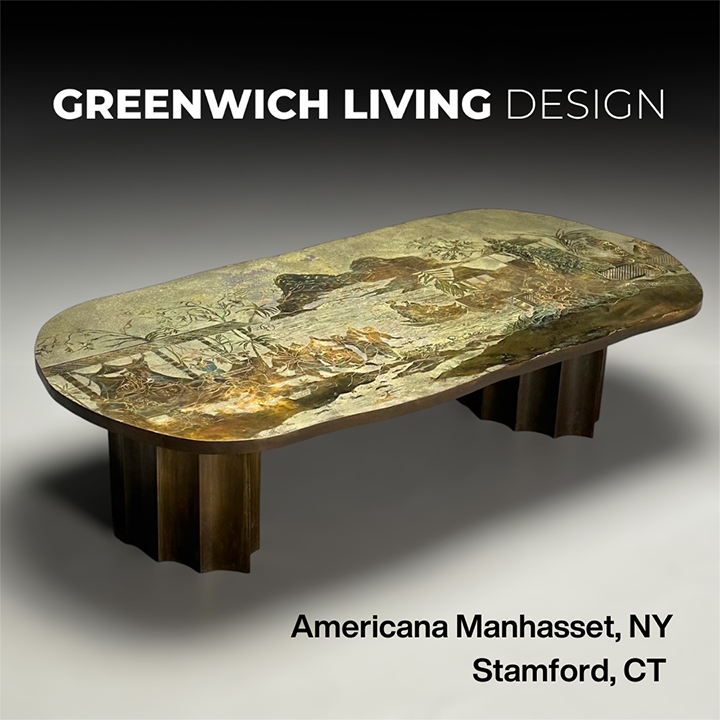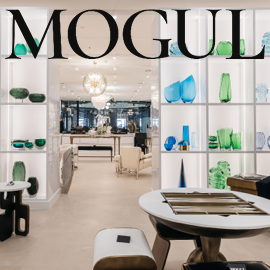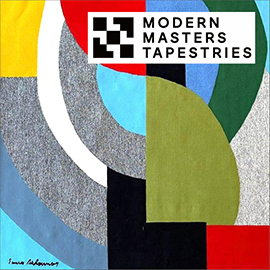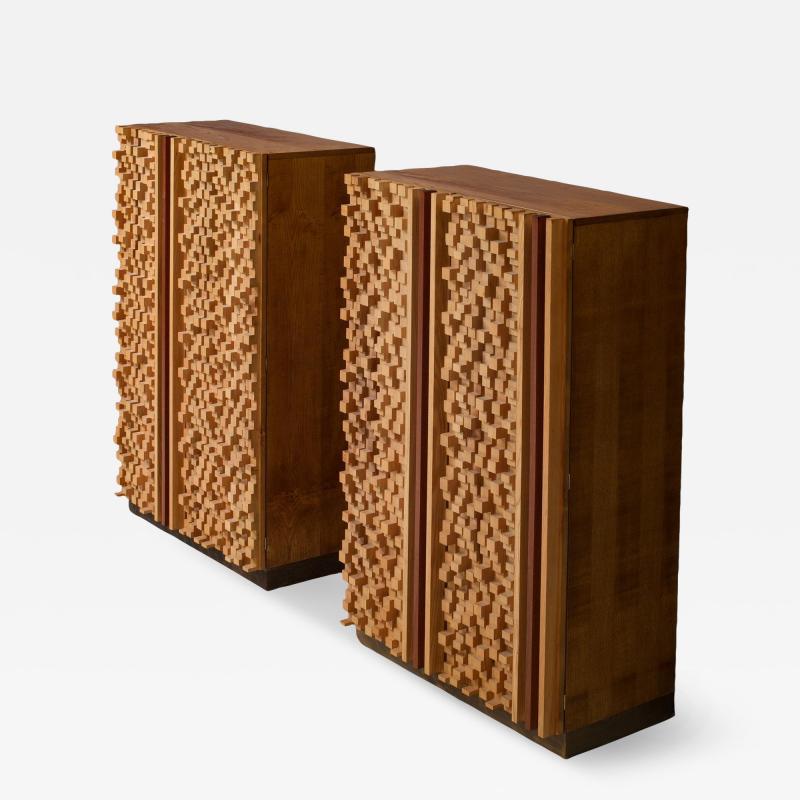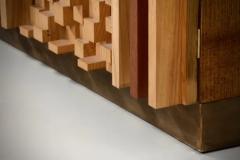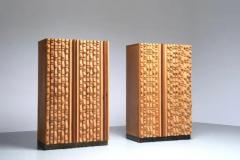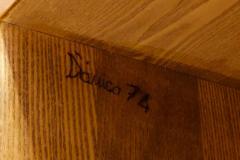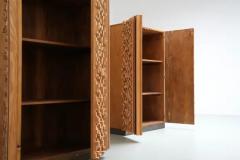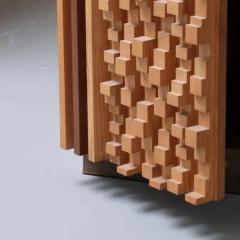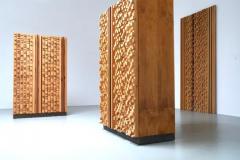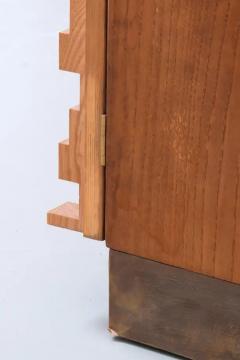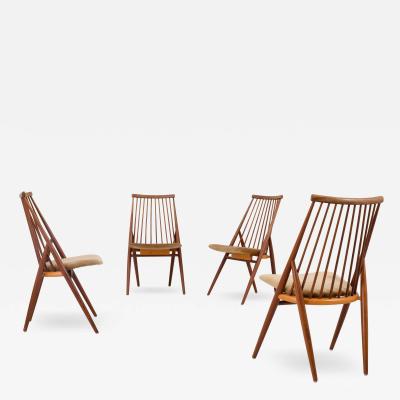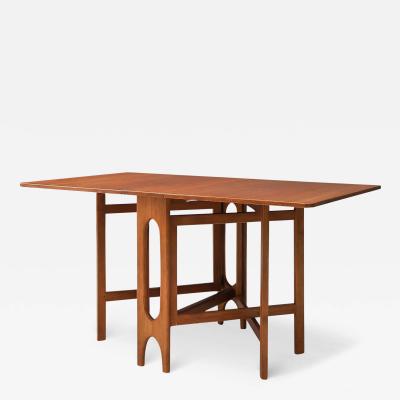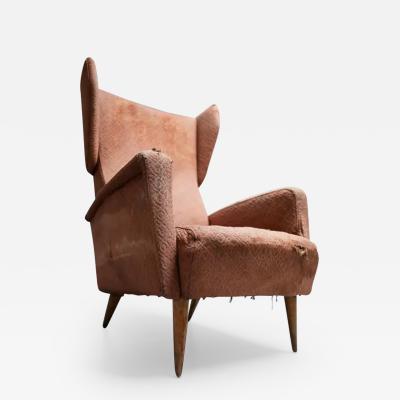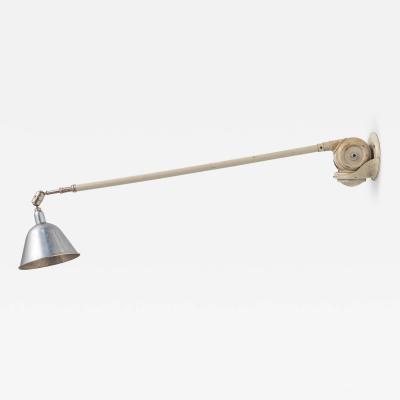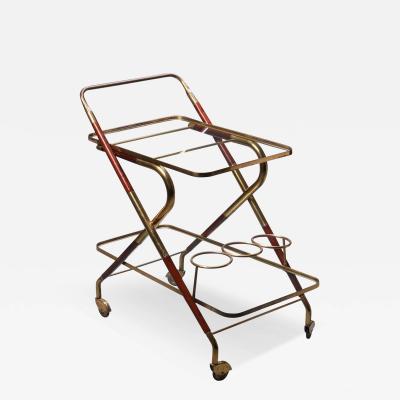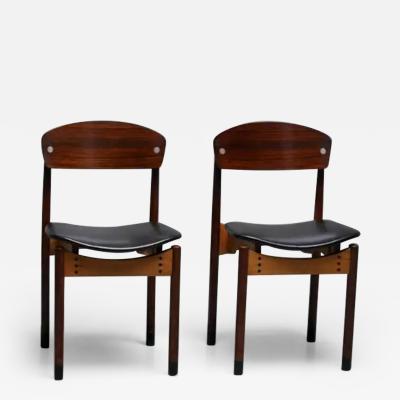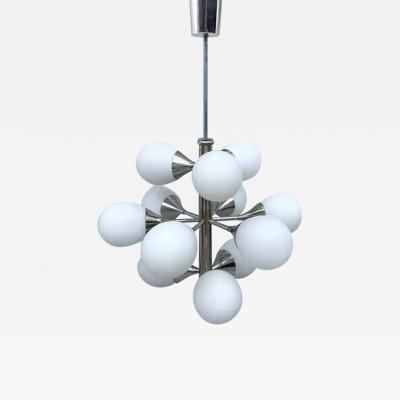Set of 2 Cabinets in Beech and Ash by Stefano d'Amico, Italy, 1974
-
Description
Two Brutalist cabinets by the Italian sculptor Stefano d’Amico, crafted in beech and ash with brass details, signed and dated 1974.
Although limited information is available about d’Amico's oeuvre, it is known that he held exhibitions in Milan and Genoa in the late 1960s. Born in Sicily, d’Amico's work, which we discovered in a publication, consistently exhibits a distinctive and compelling style, mirroring the craftsmanship of these particular cabinets. These pieces were custom-made for a residence in Venice.
The construction of these cabinets demonstrates meticulous care and precision. Each beech cube is perfectly aligned, and the strips are individually attached to the main board using a single nail (or two) and adhesive. The resulting design offers a visual feast for enthusiasts of brutalist and cubistic surface patterns. The seemingly random arrangement of the cubes creates an intricate and captivating visual texture, reminiscent of urban landscapes with large building blocks and railways or rivers, albeit without the concrete.
The play of light and shadow on these cabinets is particularly striking. Under spotlight illumination, the cityscape-like structure creates dynamic shadow effects, enhancing the visual impact. The coloured wood reflects light effectively, producing a spectrum of lighter and darker areas, which adds depth and intrigue to the overall composition.
Several noteworthy characteristics enhance the appeal of these cabinets. Darker stripes run vertically between lighter ones, and the base of the sideboard is fully covered in brass. D'Amico’s selection of varying brown hues contributes to the piece’s aesthetic, with darker shades on the sides and top and lighter tones on the front panels. Upon opening the sideboard, a pleasant and fresh wood scent is noticeable, and the interior reveals the same high level of craftsmanship, featuring detailed wood grain patterns and well-maintained gold-colored hinges and closing mechanisms, which function flawlessly even after nearly five decades. The creation of these cabinets undoubtedly required significant time and effort, showcasing Stefano d’Amico’s patience and dedication to his craft. -
More Information
Documentation: Documented elsewhere (similar item) Origin: Italy Period: 1950-1979 Materials: Ash,Beech Condition: Good. Styles / Movements: Modern, Mid Century Incollect Reference #: 748079 -
Dimensions
W. 33.86 in; H. 55.12 in; D. 18.9 in; W. 86 cm; H. 140 cm; D. 48.01 cm;
Message from Seller:
Zeger van Olden, based in Amsterdam, is a gallery specializing in Italian and Scandinavian furniture from the 1930s to the 1970s, offering unique, well-curated pieces with a focus on design harmony. With a large network spanning from Scandinavia to Italy and beyond, Zeger van Olden provides worldwide shipping and expert restoration and reupholstery services. Contact: +31 615 111 455 | info@zegervanolden.com |




